|
|
Joined: Jun 2002
Posts: 19,546 Likes: 1
living in 1962 15000+ posts
|
OP

living in 1962 15000+ posts
Joined: Jun 2002
Posts: 19,546 Likes: 1 |
http://forum.newsarama.com/showthread.php?t=139046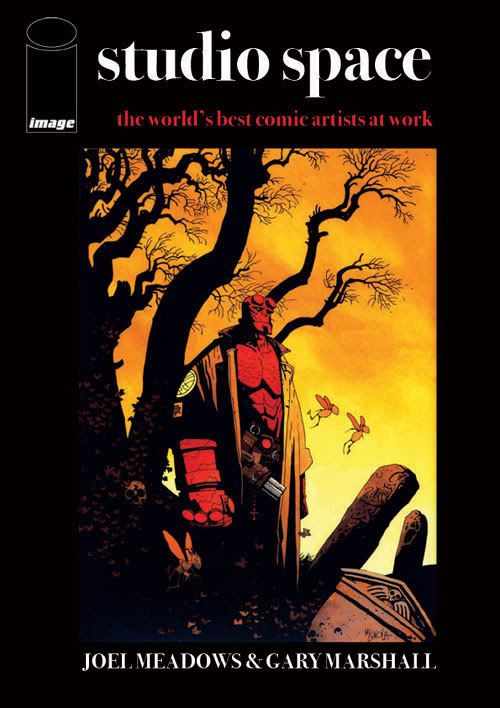 In May, Image Comics will release StudioSpace a 320-page collection from Joel Meadows of interviews, photographs and art with unique look at the way that the finest comic artists work, visiting their studios and getting into their mindset.
The massive book also speaks with the artists about their training, their “big break” and how their working methods have changed over the years. Over the course of the next three days, we’ll be bringing you peeks inside the volume, with today’s subject being Tim Sale.
The full list of artists profiled includes 1. Brian Bolland 2. Dave Gibbons 3. Tim Bradstreet 4. Howard Chaykin 5. Sean Phillips 6. Duncan Fegredo 7.Joe Kubert 8. Mike Mignola 9. Tim Sale 10. George Pratt 11. Tommy Lee Edwards 12. Adam Hughes 13. Sergio Toppi 14. Walter Simonson 15. Jim Lee 16. Frank Miller 17. Bryan Talbot 18. Alex Ross 19. Steve Dillon 20. Dave Taylor. 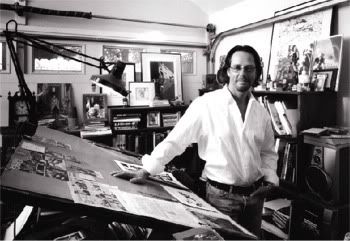 Getting Started
I pretty much learned how to read from comics, I’m told the first word I could read was ‘boom’. When I was 12 or 13 I got back into comics in a serious way through the Marvel books. There was a year when I was fanatical about Archie, I’m sure that had to do with the fact that the girls were pretty. There’s an awful lot of Betty and Veronica in Gwen and Mary Jane, on purpose in many ways, and not just from me but also from Stan Lee. So I was seriously into collecting and reading. I was copying these books, which is a pretty good way to start. One of the cool things about comics is that they are automatically short handed, that is to say there’s this short hand of anatomy, its expressionistic, and it can be thrilling for the adolescent reader, boobs and muscles. I re-learned that not only when I was drawing Gwen and Mary Jane, but also The Hulk, sort of falling in love with muscles in that way all over again.
I would sort of follow titles, but it was really the artists that I was following. With Steranko I would latch onto whatever he was doing, John Buscema was a big influence for me, and I was a fan of the early work of Barry Smith. I thought the work was wildly energetic and experimental, I know he is terribly embarrassed about it, but I thought it was great.
I was 30 before I started to really work professionally in comics, which is older than most people. I sort of fucked around, certainly with art in the 70‘s. I had two years of drawing at university in Seattle where I grew up, then a year at the Buscema Workshop in New York. John Buscema had three people, Marie Severin, John Romita Sr and himself teaching. Severin was the only one worth a damn as a teacher, though the least talented as an artist. A great woman though, and I bow in admiration of Marie’s more cartoony work, her version of The Bulk shaped my later take of The Hulk.
When I became more disillusioned with comics in New York, I got very much into Frank Frazetta and what Barry Smith was doing with Gor Blimey, which lead to other fantasy work. Then I bought an N C Wyeth book, there was a perfectly clear connection between Frank Frazetta and Wyeth, the handling of the paint, the heroic. So I was absorbing all of this fantasy, but not necessarily wizards and dragons, more Kidnapped, Treasure Island, and Robert Louis Stevenson, the foils of the classic illustrators. My enthusiasm for Wyeth and his fellow illustrators continues today.
So in my early twenties, as the comics fell off, fantasy illustration gathered momentum for me. I remember my sister telling me, ’Unicorns sell, you have to draw unicorns.’ I was saying, ‘Fuck, I hate unicorns! They’re so sissy, so girly. Can’t I draw Orcs?’ Just something more violent. It was hard to make a go if it. During the black and white boom in the 80’s Richard and Wendy Peeny of ElfQuest fame were looking for artists for an adaptation of Myth Adventures, which was written by Robert Aspirin, co-editor and writer on Thieves’ World. I became an inker on around ten of those, which is how I met Robert and Lynne Abbey. They wanted to do a Thieves’ World Book, and I was cheap, I could be pushed around and they thought I was good. It was an intense learning experience and a pretty bad experience. I’m pretty ashamed of most of the work, but what I’m most proud of is how much work I did in a short period of time. I was pencilling, inking, lettering and plotting, so a lot of work. I was really into Dave Sim’s Cerebus, especially as he was somebody doing it all, so he was a big role model when I was starting out in comics. 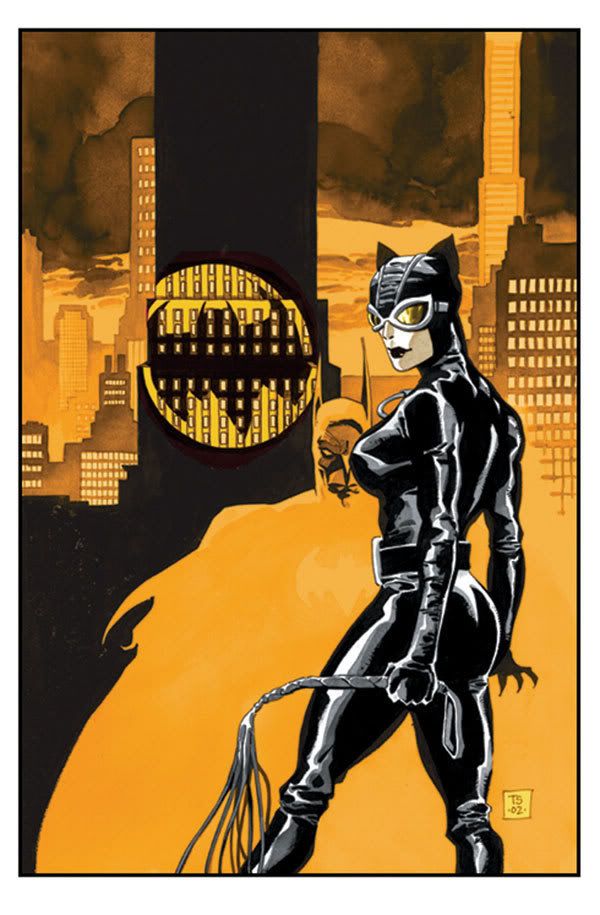
|
|
|
|
|
Joined: Dec 2007
Posts: 34
Quack! 25+ posts
|

Quack! 25+ posts
Joined: Dec 2007
Posts: 34 |
Quack 
Listen, I've worked hard to gain a "career". No doubt. But, god, there are times when I just want to lay on the couch, smoke weed, and watch television until 4am... -Prometheus
I would like to thank my fathers and my mothers but most specially my parents Son of Mxy
smile. have fun. its good for you! puts hair on your chest. -Rob
Smoking money makes you stupid.-MisterJLA
"wait, this doesn't make sense... when will you not be gay?"-Rob to pjp
"Dead people can be such attention whores!"-MisterJLA
I swear to gob, in the end I'm either going to throatfuck you, or leave you to die in the desert. Maybe both.-Prometheus
|
|
|
|
|
Joined: Jun 2002
Posts: 19,546 Likes: 1
living in 1962 15000+ posts
|
OP

living in 1962 15000+ posts
Joined: Jun 2002
Posts: 19,546 Likes: 1 |
slow weekend, huh? 
|
|
|
|
|
Joined: Jun 2002
Posts: 19,546 Likes: 1
living in 1962 15000+ posts
|
OP

living in 1962 15000+ posts
Joined: Jun 2002
Posts: 19,546 Likes: 1 |
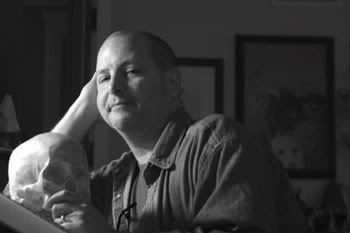 I remember an apartment in New York when I was still single, I had my studio and a front room. I bought the furniture for the front room but I never sat in it, I never went into the front room! I’d get up in the morning and go into the studio, I did it then and I pretty much do the same now. If I’m at home then I drift into the studio. It’s were I am, and I’m most comfortable when I’m working by myself. Its not lonely, I really have the best of both worlds. I have my isolation room, my studio, and I’m in here fighting with these shapes all day. But at the same time I have my wife and daughter in the house. I like to work with the television on, it’s a comfortable background noise, it probably harks back to when I was a kid, drawing with the TV on. It’s a comfort. It’s also true that I would probably work faster if I didn’t have the TV on, my editor has suggested it and we had one big fight (laughs). It works for me.
The studio itself is a mixture of the organised and the chaotic, lots of shelves with things on them. As I pull things of the shelves they usually go into giant piles on the floor. I’m a control guy, I need a certain degree of order, but within that order there is a certain chaos. It’s a constant struggle between order and chaos. I’ve just moved to California, and the first thing that I needed to establish was the studio. I needed to get the book shelves up, get the various objects up onto the top of the book cases. I need to have some sense of order, have pictures on the wall. I could just work with cardboard boxes on the floor. I need the stimuli around, even if it is not obviously there. The way I display little toys and statues, or hang paintings on the wall are arranged in a way that I find aesthetically pleasing, otherwise it would drive me crazy. You want this random feel, but I’ll want the Jesus figure to be overlapping the Hellboy figure! There is this constant thing with me, with art and manipulating my work environment of getting shapes to interact in a way I find pleasing.
It is the same with regards to how I work. I think in these massive shapes. For example, if a figure is sitting in a chair then it has to be part of that chair. I can’t draw a guy here, and then the chair wrapped around him, all separated neatly by lines. This is something that has increased as I have got older and moved further in this direction. The idea that everything mixes together to be this big solid shape.
What you see in the work I was doing at art school is all inked with a brush, its soft, kind of rubbery and it didn’t really work for me. But it was developing towards a certain style, it was getting to be really heavy with solid blacks, but the overall effect was mushy and soft. It had the high contrast, but not the high contrast of my work now. It was certainly starting to drift that way though. I was definitely a black and white guy. I thought my style was worked out, but when I started Hellboy it still continued to develop, in a direction more and more influenced by painters. As much as I grew up on a diet of comics and the like, it is painters that continue to drive me crazy and influence me more than anything else.
I look at a lot of art, the illustrators attracted me early on because I could understand what they were doing, making a picture of a pirate, whatever, I got that. But as I have gotten older my influences have become much more impressionistic, those that are more abstract. As a young artist at art school, Van Gogh didn’t necessarily do anything for me, but now those shapes and flat areas of colour, those textures, they drive me crazy. Edward Hopper is the same kind of thing. It is something that was also in Frazetta, those bold, strong shapes. As I look at the piece on my drawing table right now, it is a relatively simple image of Hellboy against an old religious piece of art. But I’m going back into this and breaking it up into little shapes, almost turning it into a mosaic knowing that I’ll be able to say to my colourist ‘Give me all these dots of another colour’. That’s a very impressionist, painterly technique. Currently, this is the way that my brain is working.
I really dislike the whole slick airbrush approach, it just doesn’t gel with my work. If it ever worked! It certainly doesn’t anymore. Finding these ways to add a certain richness to the art by breaking it up into little shapes has all come from looking at these painters.
I would love to work in oils or acrylics again, but it is a time factor. I just don’t have the time to fool around with it, I paint so seldom that when I do I want to use a medium that at least I can understand what it does, and how I can make it do certain things. All my work is in watercolour, which I don’t know how to use (laughs), so I make the best of it. I overwork paintings, there’s probably only one painting in the last few years that I didn’t overwork. But for the most part I beat them to death until the paper won’t take anymore.
When the piece starts to disintegrate is when I guess it is done.
The one thing that I do love about painting, especially in watercolour is that at a certain point it is going to do what it wants to do. I’m not a giant control freak, I like having that big messy palette and just saying, ‘What if some of this colour goes in here?’ Maybe that is more a technique associated with the oil painter, but you know, ‘Let’s stick a green in here, dab a bit into the shadow on the cheek.’ That is how I paint. The beauty of watercolour is that, as much as I control the drawing, laying in the colours and getting the water moving around leads to these wonderful accidents. You can’t get this with pen and ink, and I like accidents. I like a certain primitiveness to the art, I don’t like my work to be really slick.
This is why it is really difficult to have somebody else ink my pencils, because my drawing is very finished and looks very angular and precise, but when I ink my own work I do it really fast. I break up my blacks a certain way, mostly working so fast to try and infuse life into the drawing and a little bit of accident. But the pencil work is very precise, I’ll go back on a line nine or ten times, ‘Is this dot going to be here or here? Two dots here or three?’ It’s an amazingly anal, yet abstract way of working. It is all shape oriented, ’Do I want this curve here or here, do I want this shape smaller or larger?’ It is about trying to manufacture accident.
Here’s an example, say someone wants to draw Batman’s cape, they think of it as a piece of cloth hanging down a man’s back. To me it is an abstract shape, so if I’m drawing Batman moving then the cape has to make some kind of interesting shape. I don’t what that shape is, but either I’m going to get it down really quick as a gesture, perfect, or I’ll spend the next six hours drawing and erasing the shape until I get it right.
If Hellboy is smoking a cigarette, and there’s a puff of smoke coming off, that take me either a second or the rest of the day. I’ll keep drawing, erasing, until I get the shape I like. I’m nuts (laughs). It is a fine arts mentality. I have this drive to discover wonderful shapes, and the simplification of shape. Right now with the piece I’m working on, I’m constantly going back and forwards to the reference to interpret position and scale of these shapes. It’s not as case of, ‘Oh, these are folds, so I’ll copy them the way they are.’
Interpreting in this way feels right to me. Sometimes it works, and you know sometimes it doesn’t, but there is some weird aesthetic that I’m looking for. I only know it when I see it.
|
|
|
|
|
Joined: Jun 2002
Posts: 19,546 Likes: 1
living in 1962 15000+ posts
|
OP

living in 1962 15000+ posts
Joined: Jun 2002
Posts: 19,546 Likes: 1 |
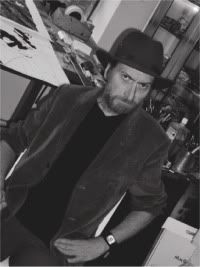
I was born in Olney, Maryland but wound up in Montpelier in Vermont from the age of five. My mother tells me that I was six years old when I came into her kitchen with a folded up piece of typing paper, stapled together like a comic book. I’d drawn all over the paper and I said to her: “I’m going to do this for the rest of my life.” Typical of my mother, she just said to me : “You can do anything you want to, just put your mind to it.” She was a very Forties mom and she was very encouraging as was my father. So the course of my career was set, and I found out over the years that I couldn’t hold any other jobs: I had to keep at this cartooning business.
I was first introduced to EC Comics. believe it or not, when I was in Boy Scout camp. My father was a scout master and he got me in under age to be in the Boy Scouts. So I was at Boy Ccout camp and there was a copy of a little paperback called Tales of The Incredible running around. I remember opening it up and seeing my first Wallace Wood woman and feeling all kinds of hormones explode all over my body. This was my first exposure to EC but I didn’t really get to delve into them until much later. Beyond that, there were DC and Marvel Comics that we all grew up with.
I first encountered Batman in a department store when I was maybe seven years old. I found this 80 page giant that cost all of 25 cents. I opened it and I still don’t know which story I was looking at but I’m pretty sure it must have been drawn by Jerry Robinson and what I loved about it is that it looked scary. It didn’t look like Superman. This guy was scary, he looked really terrifying. So I fell in love with Batman. The notion that he dressed up like a villain is delicious to this day to me.
I barely graduated art school. The man I still call my mentor is Neal Adams. I got my start in the business through him. I went to see him a few times. He always had time for me and eventually he started pulling out pieces of tracing paper, telling me ‘This is what composition is’ and drawing on top of my drawings. Finally, after maybe a year, Adams said: “Hey guys, look at this. He knows he can’t draw but look at his storytelling.” So he glared at me, picked up his phone and told the editor on the other end that he had somebody for him. I got my first job for Gold Key Comics. We may draw nothing like each other but he’s patient and generous as many people are in the industry, if gruff. But the gruffness was part of the publishing business when I started. They’d break your nose and see if you came back. If you did, then they’d respect you. It was a time when entering comics was a lovely thing because we were all broke. The companies didn’t pay squat: There were no roaylties and I got by on $25 a page and these pages took me a week each to do. I eventually got bumped up to $35 a page when I did Marvel Comics. It wasn’t until later that a revolution came when we started getting more equitable treatment and it became a good living to have. Most of the people I entered the field with have made the majority of their income from doing advertising work. I hated advertising work so I had to find a way to make comics pay.
I love the intimacy of crime comics and I love how it cuts so close to the bone and how it deals with human evil and human good at the same time. Concerning Sin City, without sin there is no virtue and the Johnny Craig stuff, in particular, which is my favorite of the straight out crime stuff, is full of dark motives and people trying to do the right thing or doing the wrong thing and getting caught. It’s about justice. Eisner’s Spirit was the other main influence in the crime stuff because he presented a trick that I emulated in my Daredevil run, which allowed you to dress up your characters as superheroes when you’re actually doing a crime story.
Japanese culture and art is something that’s always had an influence on me too. I love the way the Japanese so unabashedly combine sex and violence in a way that Westerners shy away from and they create an exaggerated mystical approach that in many ways seems truer than the real world. I first discovered Lone Wolf and Cub when I was first starting out and felt that it ripped away all this glummery that had covered up comic books. It was a girlfriend of mine at the time, Laurie Sutton, who was an editor at DC Comics, who turned me onto it. He father worked in the oil industry and he brought a copy of it back from Japan to give to Laurie, who gave it to me and my mind exploded, so I had to hunt the rest down. Basically I went to Japan and gathered them all. I was in my early twenties and I came back from there full of vim and vigor that I was going to steal this stuff and also, I wanted to make sure that it was published in the United States because it was the best graphic novel I’d ever seen and nobody had seen it. It would inspire quite a change in American comics. So I struck a deal with First Publishing that I would draw the covers with Lynn Varley painting them if they would publish them and they did: they published 12 issues. That was the beginning of manga being recognized by the United States. It was way overdue.
I worked from home for years. Eventually though, once I was doing Daredevil for Marvel, I hooked up with Walter Simonson, Jim Sherman and Howard Chaykin and joined Upstart Studios. I was invited to fill the place that Val Mayerik had left and that was a wonderful time because that was when I got exposed to the work of Moebius and other European artists. It was a salon and it changed my work forever. I think we all changed each other as we went. I was able to feed off the knowledge of the other artists because these were all older artists. I’d seen some some of Walter’s stuff when I was a kid and Howard had been around almost as long.
This was a lovely period and a great time to be at Marvel Comics because Jim Shooter had shaken things up and started insisting on much better storytelling and, for all that people complained about him, I think he transformed the comic book industry in America and probably helped to save it.
I first conceived Ronin as a reaction to two huge influences: one was Koike and Kojima’s Lone Wolf and Cub and the other was the work of Moebius. I wanted to take what had begun to feel like a pair of handcuffs, as wonderful a time as I had on Daredevil and Wolverine, and do something somewhere else. Also Will Eisner had published A Contract With God, which I regard as a sword stuck in the sand, saying “This is where we can go, you young puppies” and I wanted to do something that would last. So with all the arrogance of the twenties combined with these wonderful influences from worldwide comics, I charged into it recklessly and did the comic book of my dreams, killed myself on it. It was a joyous and a liberating time.
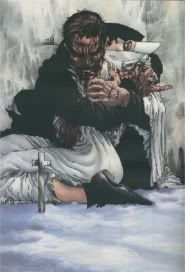
|
|
|
|
|